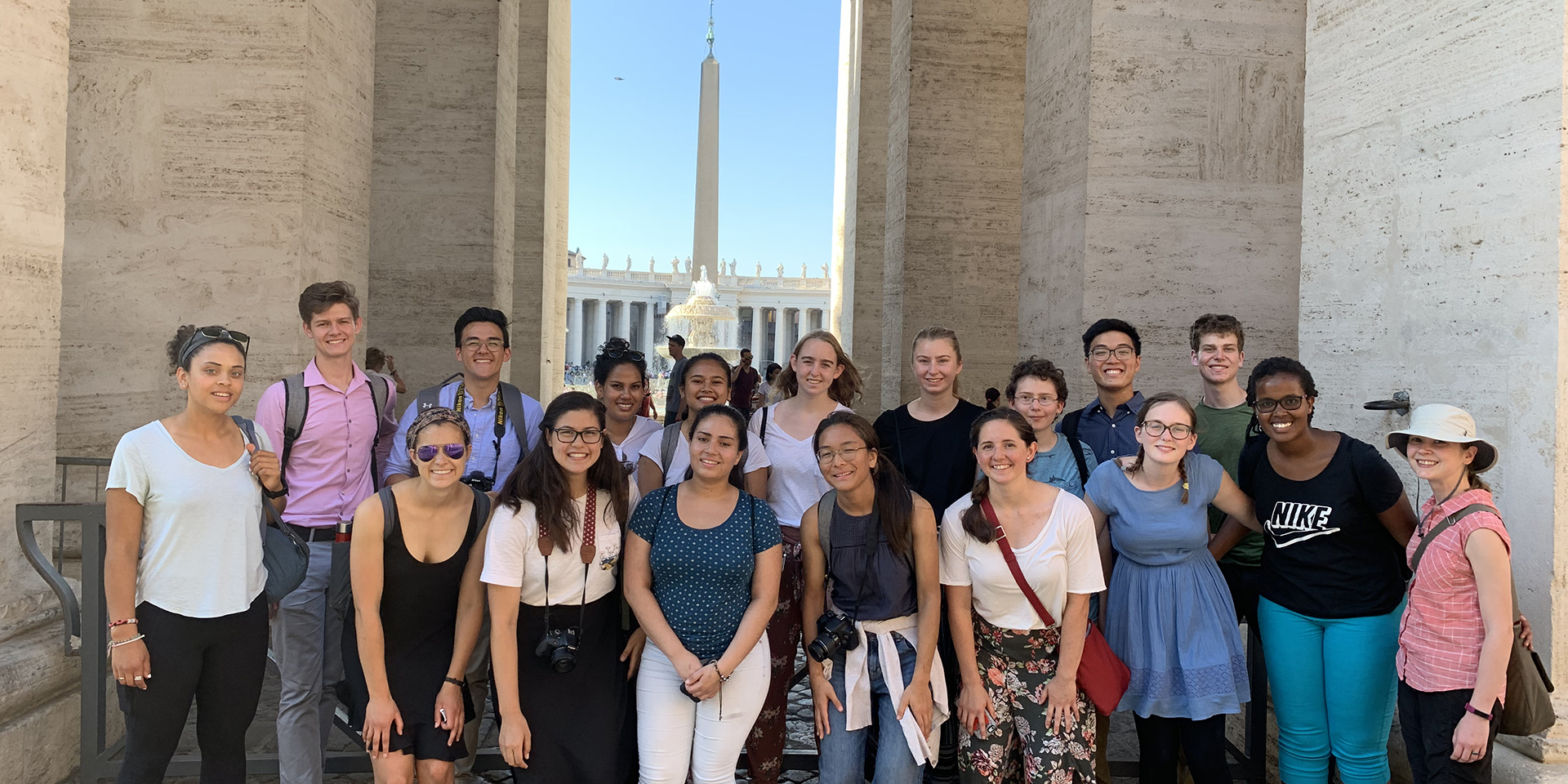ONE-MA3: The Cycle of Lime
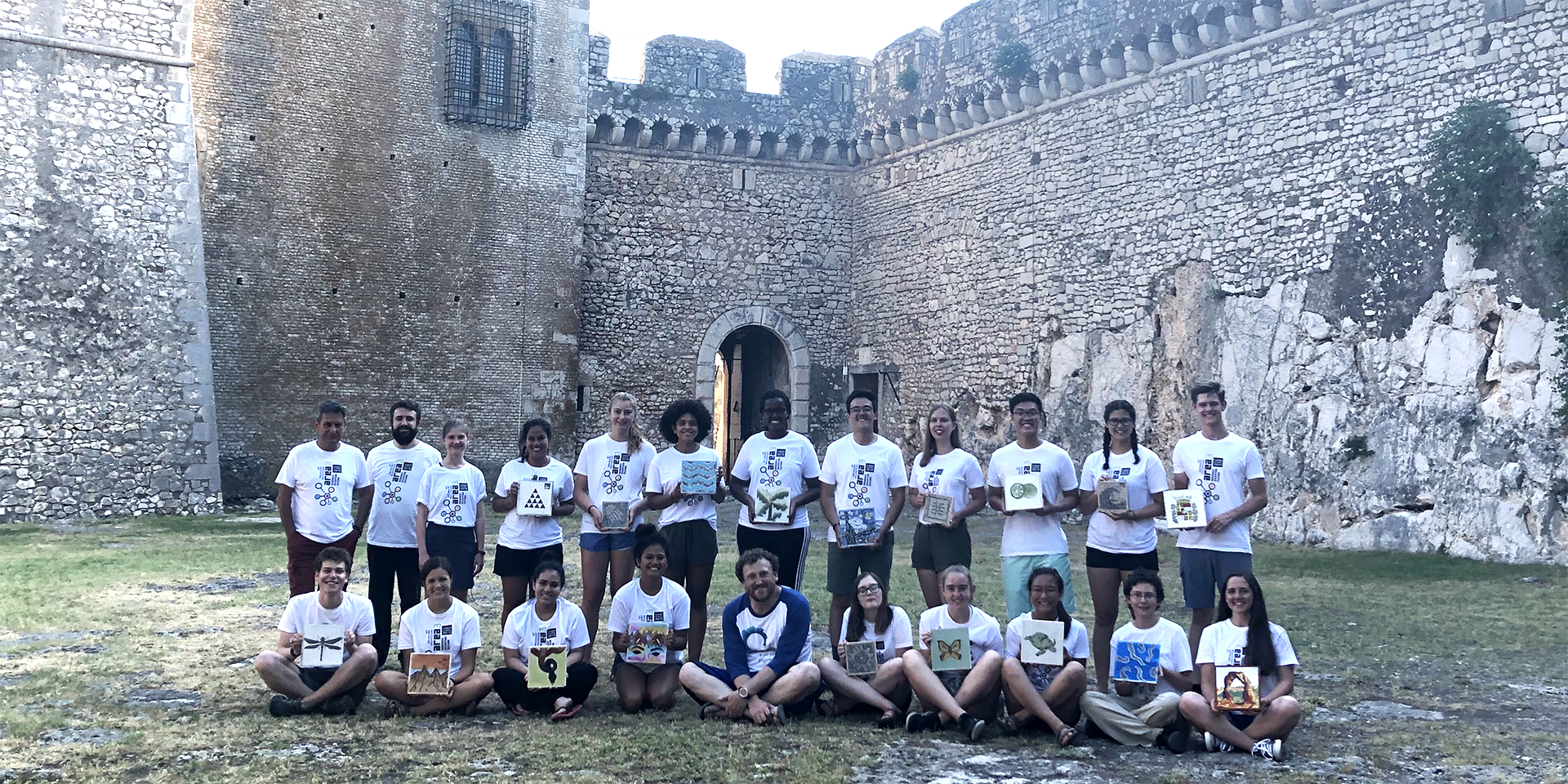
By Rovi Porter ’22
It has been over a week since we have arrived in Italy and most of our lessons have included some form of lime. From visiting the kiln to burn limestone, to making frescoes, mosaics and sgraffito (a type of scratch art) out of slaked lime (hydrated quicklime). The materials we used were even from a company whose name is “CaCO3” which is calcium carbonate (limestone). We quickly turned to Vitruvius to learn about the cycle of lime. He used the four elements- earth, fire, water and air – to explain how limestone (earth) is heated (fire) to make quicklime, which is then hydrated (water) to make slaked lime and finally exposed to carbon dioxide (air) to reform limestone.
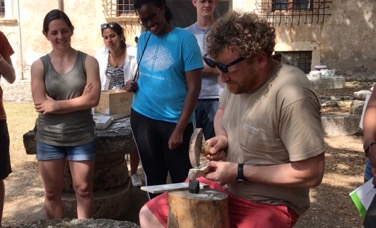
Professor Admir Masic cutting the tesserae for our mosaics, as the other OneMA3 students observe his technique
The knowledge of this cycle allowed the Romans to create structures such as the Pantheon which has lasted an impressive 1,893 years! Unfortunately, we do not know the exact recipe for Roman Cement, so today we use Portland Cement, which is not as durable and requires heating up to 1450 degrees Centigrade. Thus, we are still very interested in studying Roman cement. In line with this research, we dabbled with mortar by having each group of four students mix different inert and reactive ingredients with lime. We split into groups and had a competition to make the best mortar based on sustainability (lowest carbon emissions) and strength. Just yesterday, we found out that my group formulated the most durable mortar! We came to this conclusion by having our professor, Admir Masic, perform an indent test by trying to poke a nail into the mortar. He then showed us the compression strength of our mortars by standing on them. While I had my doubts that any of the mortars would be strong enough to resist the force, it turned out that almost all of them survived the testing!

Doing an indentation test on the mortars using a nail to determine the strength of the mortar
Other applications of lime is for the creation of mosaics and frescoes. They are made by adding ingredients to the slaked lime so that when the lime solidifies, it incorporates the added materials. To make the mosaics, we put tesserae (the rock/tile/glass used to make mosaics) into mixed mortar. I decided to create a modern mosaic, and designed a surfer by cutting out my own tesserae shapes, instead of using the typical cubes. The frescoes are made in a similar way, simply by painting pigments onto the wet mortar. The experience of making mosaics and frescoes allowed me to really appreciate all of the effort that goes into these art pieces, the techniques of the Romans, and of course the importance of lime!
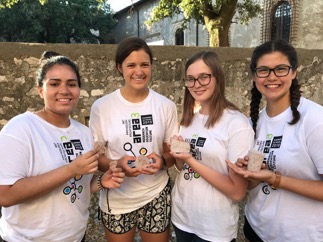
My group holding our mortar after letting it set for 2 days. From left: Stephanie Baez ’22, Naomi Lutz ’22, Meriah Gannon ’22, and Rovi Porter ’22
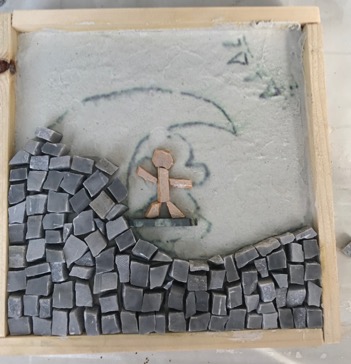
My fresco in the making!
Share on Bluesky


